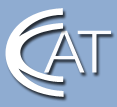Explore high-paying careers in clean, high-tech Connecticut manufacturing.

Educators: Externships
Work-based Learning Projects for the Classroom
Project: Exploring Autodesk Inventor Software
Name of NGM Educator: Dave Salonia, Technology Education, Berlin High School |
Name of Host Company: Mechtron, Inc. |
Grade Level: Grades 9 - 12, high school |
Student Work Types:
|
Task Abstract: Students will gain a greater understanding of the practical uses of Autodesk Inventor software as it is applied in the workplace, through lab exercises, a field trip to the host company and through an engineering journal. |
Task Objectives: This externship project will be shared with other teachers in the Project Lead the Way network. Some of this information is not currently covered in the PLTW tutorials or curriculum. It is hoped that the information presented to students will be utilized by PLTW administration to enhance future curriculum udpates. |
Esssential Understandings/Questions: Students will be required to do several lab activities that will enhance their understanding of Autodesk Inventor. |
Task Description: Labs:
Engineering Journal: Students will be required to keep an engineering journal containing sketches, data, revisions, and conclusions for their project. The journal will then be graded against a standard rubric. Field Trip; Students will participate in a field trip to the hosting company to observe the operation and have an opportunity to ask questions to gain a further understanding of the design process and various aspects of the Inventor program a it relates to real-world engineering applications. |
Resources Required: Autodesk Inventor software |
Prior Learning Required: N/A
|
Educator Comments: My curriculum includes a specific problem that the students need to solve given a certain set of constraints. Then, the students must use the knowledge that they've gained to solve this problem. They use higher level thinking skills and begin to create their own knowledge during this process. Many of my engineering students have said their engineering classes "have been the most important and fun classes during their entire high school experience." I believe this is a significant statement and it attests to the value of this curriculum. When a student can learn and have fun at the same time it's a tremendous accomplishment, not only for the student, but for the teacher as well. It's much more gratifying to teach a group of students that want to learn as opposed to students who are learning out of obligation. With this curriculum, students are motivated to learn because they have a goal that is meaningful to them. It's a much more real-world approach. |





